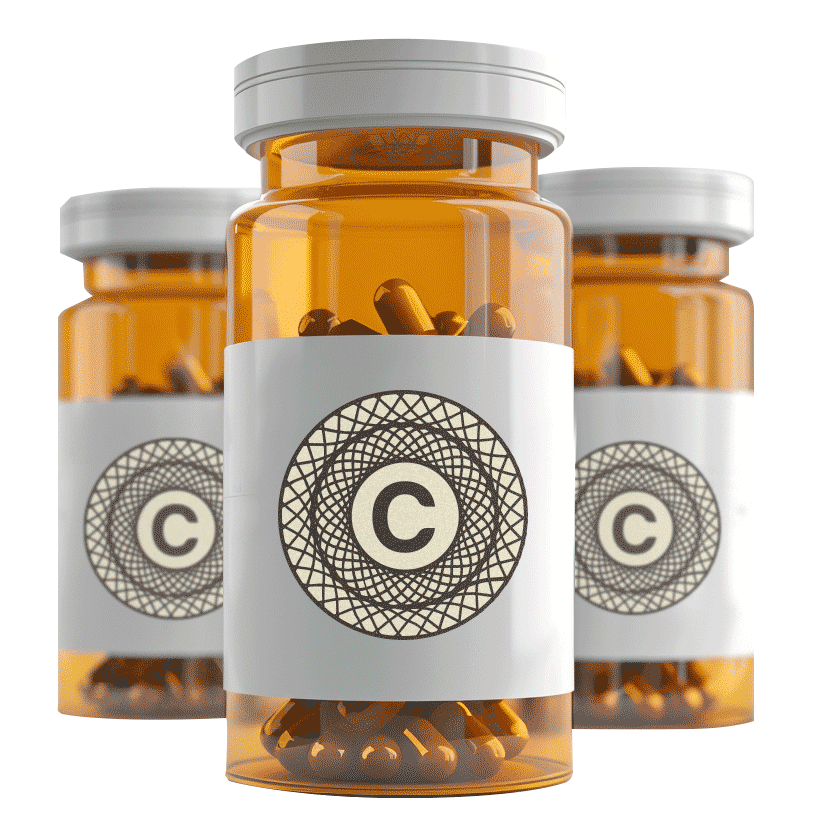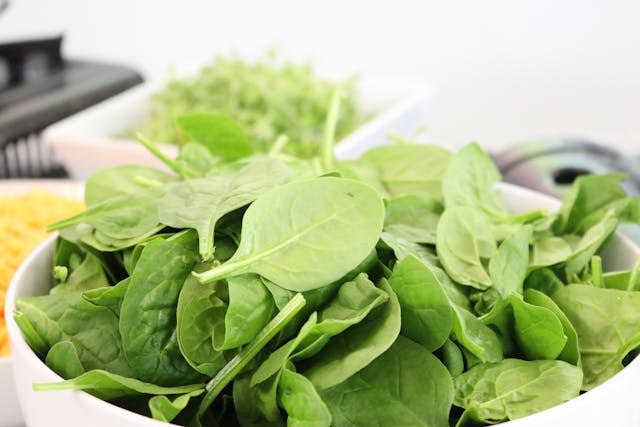The PTSD-Nutrition Connection: How Food Can Heal Trauma
Living with Post-Traumatic Stress Disorder (PTSD) can feel like an uphill battle, affecting not just the mind but the entire body. Trauma rewires the nervous system, disrupts sleep, heightens anxiety, and weakens digestion. While therapy, medication, and mindfulness practices play a critical role in recovery, nutrition for PTSD is a powerful yet often overlooked healing tool.
What you eat directly impacts:




A PTSD-friendly diet can help restore balance, reduce anxiety, and naturally support emotional well being.
In this guide, we’ll explore the best dietary strategies for PTSD recovery, focusing on foods that:
• Reduce anxiety and stress naturally.
• Enhance brain function and neurotransmitter balance.
• Lower inflammation and strengthen the gut-brain connection.
• Promote restful sleep and emotional well-being.
Healing PTSD with diet and lifestyle isn’t just about avoiding certain foods—it’s about adding powerful nutrients that support your brain, balance emotions, and promote long-term recovery.
While PTSD (Post-Traumatic Stress Disorder) is often addressed with therapy and medication, an emerging body of research shows that nutrition for PTSD plays a key role in recovery. The foods you eat influence brain chemistry, inflammation, gut health, and overall mental resilience. By following targeted PTSD dietary recommendations, you can optimize your body’s ability to regulate stress, improve mood stability, and enhance cognitive function.
In this section, we explore the scientific research behind diet and PTSD, shedding light on the foods that promote healing and the key nutrients essential for long-term recovery.
Best Foods to Support PTSD Recovery
Science confirms that targeted nutrition can reduce PTSD symptoms by improving brain chemistry, reducing inflammation, and supporting gut health. Let’s explore the most effective nutrients and how they contribute to recovery.
1. Omega-3 Fatty Acids for PTSD Symptom Relief
Omega-3 fatty acids play a crucial role in brain health, reducing inflammation, and improving emotional resilience. These essential fats help regulate serotonin and dopamine levels, supporting mood balance and cognitive function.
Best sources:
• Fatty fish (salmon, sardines, mackerel)
• Plant-based sources (chia seeds, flaxseeds, walnuts)
• Algae-based omega-3 supplements
Research Insight: A review in Nutrients found that omega-3 fatty acids may help reduce anxiety and depression symptoms, supporting their role in PTSD dietary recommendations.
2. Antioxidants and Polyphenols to Reduce PTSD-Related Stress
Oxidative stress worsens PTSD symptoms by damaging brain cells and increasing inflammation. Antioxidants protect the brain, improve neurotransmitter function, and combat stress.
Best sources:
• Berries (blueberries, strawberries, blackberries) – Rich in flavonoids that protect the brain. • Bell peppers, strawberries, citrus foods, broccoli – High in vitamin C reducing oxidative stress. • Sunflower seeds, almonds, avocados – High in vitamin E for brain support.
• Green tea and dark chocolate (85% cocoa or higher) – Contain polyphenols that combat stress.
Did you know? Green tea contains L-theanine, an amino acid that promotes relaxation, reduces PTSD-related anxiety, and improves focus by increasing alpha brain waves.
3. Magnesium for Better Sleep and Stress Reduction
Magnesium is a natural muscle relaxant that helps regulate the nervous system, improve sleep quality, and reduce stress. Studies suggest that individuals with PTSD often have lower magnesium levels, contributing to anxiety, poor sleep, and muscle tension.
Best sources:
• Nuts and seeds (almonds, pumpkin seeds, chia seeds)
• Whole grains (quinoa, brown rice, oats)
• Dark leafy greens (Spinach, Swiss chard, kale)
Research Insight: A randomized controlled trial in Medical Research Archives found that magnesium supplementation significantly improved sleep quality, suggesting potential benefits for PTSD recovery.
4. Tryptophan-Rich Foods to Boost Serotonin
Tryptophan is an essential amino acid required for serotonin production, which supports mood stabilization, emotional regulation, and sleep quality. Since serotonin cannot be produced by the brain alone, dietary sources of tryptophan are crucial for PTSD symptom relief.
Best sources:
• Turkey, chicken → High in tryptophan, supporting serotonin production.
• Eggs, dairy products → Contain bioavailable tryptophan and other essential nutrients. • Cashews, almonds → Provide tryptophan plus magnesium, which enhances serotonin synthesis.
Research Insight: A study in The American Journal of Clinical Nutrition found that high-carbohydrate meals significantly increased plasma tryptophan levels, which may support serotonin synthesis and mood regulation.
5. Gut-Healing Foods for PTSD Symptom Management
Since 95% of serotonin is produced in the gut, a balanced gut microbiome is essential for PTSD recovery. Research shows that improving gut health can reduce anxiety, enhance resilience, and support emotional balance.
Best sources for gut health:
• Probiotics: Yogurt, kefir, sauerkraut, kimchi – Promote beneficial gut bacteria. • Prebiotics: Garlic, onions, bananas, asparagus – Feed good gut bacteria.
• High-fiber foods: Lentils, chickpeas, black beans – Support digestion and gut-brain axis balance.
Research Insight: A pilot RCT in Frontiers in Neurology found that Lactobacillus reuteri DSM 17938 helped regulate stress-induced inflammatory responses in veterans with PTSD, highlighting the potential role of probiotics in PTSD management.
By making intentional dietary changes, you can support your mind and body in healing from PTSD. Small, intentional changes in your diet can have a profound impact on PTSD recovery. Choose one healing food today, experiment with new meals, and take the first step toward better mental well-being!
Lifestyle Strategies to Enhance PTSD Recovery
While nutrition for PTSD plays a crucial role in reducing inflammation, balancing neurotransmitters, and supporting the gut-brain connection, lifestyle choices are equally important for PTSD symptom relief. A holistic PTSD recovery plan combines a PTSD-friendly diet with mind-body practices, physical activity, sleep hygiene, and stress-reduction techniques—enhancing emotional resilience and overall well-being.
1. Mind-Body Practices to Reduce PTSD Symptoms
PTSD often triggers hyperarousal, chronic stress, and emotional dysregulation, making it difficult to feel calm and grounded. Mindfulness-based practices help rewire the nervous system, shifting the body from a fight-or-flight state to a relaxation response, which supports better emotional and cognitive function.
Best Mind-Body Practices for PTSD Recovery:
• Meditation & Deep Breathing → Lowers cortisol levels, increases GABA production, and promotes relaxation.
• Yoga & Tai Chi → Enhances vagal tone, improving resilience to stress.
• Grounding Techniques → Helps bring attention to the present moment, reducing flashbacks and anxiety.
Start small—just a few minutes of deep breathing or yoga daily can help regulate your nervous system and reduce PTSD symptoms.
2. Regular Physical Activity for PTSD Symptom Relief
Exercise is one of the most effective natural treatments for PTSD, as it boosts serotonin, dopamine, and endorphins—key neurotransmitters for mood balance, anxiety reduction, and emotional stability.
Best Types of Exercise for PTSD:
• Walking in Nature (Green Therapy) → Lowers stress hormones and improves mood.
• Strength Training & Resistance Exercises → Enhances body awareness and emotional regulation.
• Dancing & Rhythmic Movement (EMDR-Based Exercises) → Engages both hemispheres of the brain, helping process trauma.
Even 20 minutes of movement a day can improve mood and resilience. Find an activity you enjoy and stay consistent.
3. Sleep Hygiene: Why Restorative Sleep is Crucial for PTSD Recovery
PTSD and sleep disturbances go hand in hand. Many individuals with PTSD struggle with insomnia, nightmares, and difficulty falling or staying asleep, which can worsen anxiety, depression, and cognitive function.
How to Improve Sleep with PTSD:




Want to finally wake up feeling refreshed? Learn how to optimize your sleep with our blog about Science-Backed Strategies to Sleep Better Tonight.
4. Sunlight & Vitamin D for PTSD Recovery
Vitamin D deficiency is common in individuals with PTSD and is linked to increased inflammation, fatigue, and mood imbalances. Getting natural sunlight not only improves vitamin D levels but also helps regulate the circadian rhythm and enhances serotonin production.
How to Optimize Vitamin D for PTSD:



A few minutes of daily sunlight boosts serotonin, regulates sleep, and supports mental well-being— prioritize outdoor time.
5. Stress Reduction Techniques for PTSD Symptom Management
Chronic stress worsens inflammation, neurotransmitter imbalances, gut health, intensifying PTSD symptoms. Incorporating stress-reduction techniques can help regulate the autonomic nervous system, allowing for faster emotional recovery.
Best Stress-Relief Practices for PTSD:



Managing stress is key to PTSD recovery. Experiment with techniques like journaling, aromatherapy, or connecting with others.
Final Thoughts: A Holistic Approach to PTSD Recovery
Optimizing PTSD recovery isn’t just about diet or lifestyle alone—it’s about combining the right nutrition, movement, stress-reduction techniques, and sleep habits to create a well-rounded healing approach.
A PTSD-friendly diet can:
• Reduce anxiety and stress naturally.
• Support neurotransmitter balance for improved mood.
• Strengthen the gut-brain axis to regulate emotions.
• Enhance sleep quality and relaxation.
Every small change in your diet and lifestyle brings you closer to healing. Start today by incorporating just one nutrient-dense food or self-care practice—your body and mind will thank you!
FULLSCRIPT
Care when you need it.
Looking for a high-quality, ultra-pure omega-3 supplement to support brain function, reduce inflammation, and promote heart health? Nordic Naturals ProOmega® 2000 delivers a powerful dose of EPA & DHA in triglyceride form, ensuring maximum absorption and effectiveness. </p> <p>Order Now & Fuel Your Body with the Best Omega-3s!

Need Personalized Guidance?
Struggling with PTSD symptoms? A personalized nutrition plan can help. Work with a registered dietitian specializing in PTSD nutrition to optimize your diet, reduce anxiety, and enhance emotional well-being.

